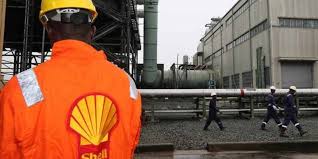Oil & Energy
Oil Workers, Stakeholders Unite To End Crude Oil Theft

Oil workers under the aegis of the Petroleum and Natural Gas Senior Staff Association of Nigeria (PENGASSAN) have reiterated their commitment to collaborate with stakeholders in the oil and gas industry to end crude oil theft.
This resolve, they said, would further boost the economic development of the country.
PENGASSAN’s President, Festus Osifo, who made this known at the Opening Ceremony of the 3rd Edition of the PENGASSAN Energy and Labour Summit (PEALS) in Abuja, Weekend, said the scourge of crude oil theft poses a significant threat to the industry, economy, and national integrity.
He said the association has mounted the rostrum over time, both on the streets and in the boardroom, to champion the cause, adding that it would not relent until victory is gained.
Osifo explained that the association was steadfast in the resolve to continuously partner with other stakeholders in the industry to combat the menace through enhanced security measures, technological innovations, community engagement, and collaboration with law enforcement agencies.
He charged the relevant stakeholders and captain of industries at the event to come out with workable solutions that would end the monster, while urging government to put the nation on the right track in terms of economic development.
“As we gather here, let us not lose sight of the broader state of our nation. Nigeria stands at crossroads, and our actions and decisions here in the next few days will provide a framework for a policy trust for government towards shaping the economic outlook of our country. It is incumbent upon us to drive positive change, foster economic growth, and ensure our people’s prosperity.
“Recent policy directions by the government has placed untold hardship on Nigerians. Chief among them is the flotation cum devaluation of the Naira, which saw our currency slide from 450 Naira officially in May 2023 to the current exchange rate of about 1600 Naira.
“This is the reason the landing price of PMS today is over 1,000 Naira (reintroduction of subsidy), the reason why AGO is selling for over 1,300 Naira, and the reason why all Imported commodities are over the roof today.
“The overarching Impact of this on Nigerians can only be imagined rather than experienced.
“Part of the decisions of floatation has totally benefited the oil and gas companies in Nigeria. This has necessitated call for a salary benchmark for oil and gas workers, alignment of trade of the oil and gas commodity Angola, where legislation pegs work pays then the legal tender equivaler Instrument mactised in Mars and at the possibilities of safeguarding the interests of workers amidst currency fluctuations.
“The floating of the Naira in the official market has exacerbated the challenges faced by our members. We must explore innovative solutions to forestall financial losses to workers and prevent undue gains to companies, ensuring a fair and equitable environment for all. PENGASSAN will do all it can to push for this just and equitable distribution across its branches”, he said.
Earlier, in her address, the Minister of State for Labour and Employment, Nkeiruka Onyejeocha, said the event provided the needed platform for the invited professionals, policy makers and Stakeholders in the Petroleum Sector to deliberate on the present and future of the nation’s Oil and Gas Industry focusing on Energy Mix, Security, Divestment and the menace of Crude oil theft as captured by the theme of the year’s Summit with a view to providing access to cheaper energy which she said has become essential for the functioning of modern economies.
Oil & Energy
Nigeria Loses More Crude Oil Than Some OPEC Members – Nwoko

Nigeria’s losses due to crude oil theft has been said to be more significant than those of some other members of the Organisation of Petroleum Exporting Countries(OPEC).
The Chairman, Senate Ad- hoc Committee on Crude Oil Theft, Senator Ned Nwoko, made this known in an interview with newsmen in Abuja.
Nwoko noted with dismay the detrimental impact of the issue, which, he said include economic damage, environmental destruction, and its impact on host communities.
According to him, the theft was not only weakening the Naira, but also depriving the nation of vital revenue needed for infrastructure, healthcare, education and social development.
The Senator representing Delta North Senatorial District described the scale of the theft as staggering, with reports indicating losses of over 200,000 barrels per day.
Nwoko disclosed that the ad hoc committee on Crude Oil Theft, which he chairs, recently had a two-day public hearing on the rampant theft of crude oil through illegal bunkering, pipeline vandalism, and the systemic gaps in the regulation and surveillance of the nation’s petroleum resources.
According to him, the public hearing was a pivotal step in addressing one of the most pressing challenges facing the nation.
‘’Nigeria loses billions of dollars annually to crude oil theft. This is severely undermining our economy, weakening the Naira and depriving the nation of vital revenue needed for infrastructure, healthcare, education, and social development.
‘’The scale of this theft is staggering, with reports indicating losses of over 200,000 barrels per day more than some OPEC member nations produce.
‘’This criminal enterprise fuels corruption, funds illegal activities and devastates our environment through spills and pollution.
‘’The public hearing was not just another talk shop; it was a decisive platform to uncover the root causes of crude oil theft, bunkering and pipeline vandalism.
‘’It was a platform to evaluate the effectiveness of existing surveillance, monitoring, and enforcement mechanisms; Identify regulatory and legislative gaps that enable these crimes to thrive.
‘’It was also to engage stakeholders, security agencies, host communities, oil companies, regulators, and experts to proffer actionable solutions; and strengthen legal frameworks to ensure stricter penalties and more efficient prosecution of offenders”, he said.
Nwoko noted that Nigeria’s survival depended
Oil & Energy
Tap Into Offshore Oil, Gas Opportunities, SNEPCO Urges Companies

Shell Nigeria Exploration and Production Company Ltd. (SNEPCo) has called on Nigerian companies to position themselves strategically to take full advantage of the growing opportunities in upcoming offshore and shallow water oil and gas projects.
The Managing Director, SNEPCO, Ronald Adams, made the call at the 5th Nigerian Oil and Gas Opportunity Fair (NOGOF) Conference, held in Yenagoa, Bayelsa State, last Thursday.
Adams highlighted the major projects, including Bonga Southwest Aparo, Bonga North, and the Bonga Main Life Extension, as key areas where Nigerian businesses can grow their capacity and increase their involvement.
“Shell Nigeria Exploration and Production Company Ltd. (SNEPCo) says Nigerian companies have a lot to benefit if they are prepared to take advantage of more opportunities in its offshore and shallow water oil and gas projects.
“Projects such as Bonga Southwest Aparo, Bonga North and Bonga Main Life Extension could grow Nigerian businesses and improve their expertise if they applied themselves seriously to executing higher value contracts”, Adams stated.
Adams noted that SNEPCo pioneered Nigeria’s deepwater oil exploration with the Bonga development and has since played a key role in growing local industry capacity.
He emphasized that Nigerian businesses could expand in key areas like logistics, drilling, and the construction of vital equipment such as subsea systems, mooring units, and gas processing facilities.
The SNEPCO boss explained that since production began at the Bonga field in 2005, SNEPCo has worked closely with Nigerian contractors to build systems and develop a skilled workforce capable of delivering projects safely, on time, and within budget both in Nigeria and across West Africa.
According to him, this long-term support has enabled local firms to take on key roles in managing the Bonga Floating, Production, Storage and Offloading (FPSO) vessel, which reached a major milestone by producing its one-billion barrel of oil on February 3, 2023.
Oil & Energy
Administrator Assures Community Of Improved Power Supply

The Emohua Local Government Area Administrator, Franklin Ajinwo, has pledged to improve electricity distribution in Oduoha Ogbakiri and its environs.
Ajinwo made the pledge recently while playing host in a courtesy visit to the Oduoha Ogbakiri Wezina Council of Chiefs, in his office in Rumuakunde.
He stated that arrangements are underway to enhance available power, reduce frequent outages, and promote steady electricity supply.
The move, he said, was aimed at boosting small and medium-scale businesses in the area.
“The essence of power is not just to have light at night. It’s for those who can use it to enhance their businesses”, he said.
The Administrator, who commended the peaceful nature of Ogbakiri people, urged the Chiefs to continue in promoting peace and stability, saying “meaningful development can only thrive in a peaceful environment”.
He also charged the Chiefs to protect existing infrastructure while promising to address the challenges faced by the community.
Earlier, the Oduoha Ogbakiri Wezina Council of Chiefs, led by HRH Eze Goodluck Mekwa Eleni Ekenta XV, expressed gratitude to the Administrator over his appointment and pledged their support to his administration.
The chiefs highlighted challenges facing the community to include incessant power outage, need for new transformers, and the completion of Community Secondary School, Oduoha.
The visit underscored the community’s expectations from the LGA administration.
With Ajinwo’s assurance of enhancing electricity distribution and promoting development, the people of Oduoha Ogbakiri said they look forward to a brighter future.
By: King Onunwor

